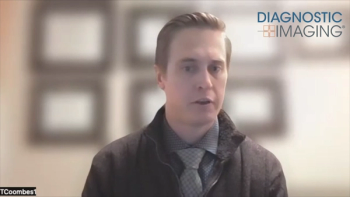
Dornier banks on new lithotripter
Delays at the Food and Drug Administration have left Dornier withouta production line shock-wave lithotripter approved for sale inthe U.S. Dornier Medizintechnik of Munich has discontinued productionof its HM-4 lithotripter, while the FDA has not yet
Delays at the Food and Drug Administration have left Dornier withouta production line shock-wave lithotripter approved for sale inthe U.S. Dornier Medizintechnik of Munich has discontinued productionof its HM-4 lithotripter, while the FDA has not yet approved itssuccessor, the MFL 5000.
"The problem with being a worldwide manufacturer is youcannot run your production line solely for the U.S.," saidRobert Minton, vice president of marketing for Dornier MedicalSystems of Marietta, GA. "You have to take into considerationthe product needs of all markets."
"Adequate numbers" of HM-4s to meet forecasted needsin the U.S. have been manufactured, Minton said.
While there are HM-4s in warehouses, many, if not all, of thesesystems have been contracted for. "It is important to usthat the FDA look favorably on our new product," said RichardCline, vice president of service.
Dornier is struggling to maintain dominance of a U.S. marketit created in December 1984. Total sales of extracorporeal shock-wavelithotripsy (ESWL) units reached about 71 units in 1987 and thenplummeted, according to Market Intelligence Research of MountainView, CA. Industry sources agree that total sales in 1990 wereless than 30 units. The sluggish market is expected to continuethis year.
Siemens is challenging Dornier for leadership in this shrunkenmarket and may be succeeding.
Seventy-five percent of U.S. units installed in 1989 were SiemensLithostars, according to Laura Lee Murphy, Siemens sales managerfor lithotripsy and urology systems. Siemens' final 1990 figuresare not available.
Dornier will not comment on market share for the past two years.It has about 80% of the installed base and hopes to retain theleadership role in orders and installations, according to Minton.
Dornier officials are working with the FDA to answer specificquestions regarding its submission for the MFL 5000. The companyexpects to be back in the game soon with a production line lithotripter.
"The results of our IDE (investigational device exemption)trials were actually better than for our HM-3s (the first ESWLmachines introduced to the U.S.)," Minton said. "Basedon that track record, we're confident that the machine will gothrough approval fairly easily."
Newsletter
Stay at the forefront of radiology with the Diagnostic Imaging newsletter, delivering the latest news, clinical insights, and imaging advancements for today’s radiologists.




























